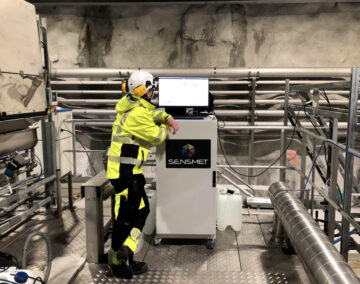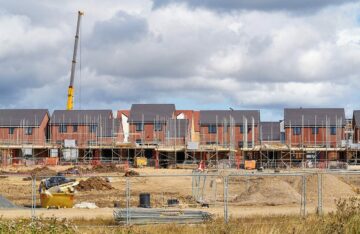

Recent research at Dooshisha University in Japan highlights the potential use of pyrolysis to recover carbon fibres from composites
Minimizing energy consumption is a fundamental element in our journey towards sustainable societies, and advanced materials play a key role in this regard. Carbon-fibre-reinforced plastics (CFRPs) and carbon-fibre-reinforced thermoplastics (CFRTPs) are two prominent examples of composite materials that can significantly improve energy efficiency in various fields of application.
These composites are made of carbon fibres embedded in a polymer matrix, such as epoxy resin. Thanks to their low weight and remarkable mechanical strength, CFRPs and CFRTPs can greatly reduce the fuel consumption of aircraft, spacecraft, and automobiles. Moreover, they are durable and corrosion-resistant, making them suitable for renewable energy applications like wind turbines.
In recent years, the demand for CFRPs and CFRTPs has grown explosively. However, this also means that the amount of CFRP/CFRTP waste is also increasing rapidly. Since producing carbon fibres is very energy intensive, researchers have been looking for economically feasible ways to recover them from CFRP/CFRTP waste through a process known as “reclamation.” Thus far, the thermal decomposition (pyrolysis) technique seems to be the most effective, but preserving the mechanical properties of the reclaimed fibres has proven challenging.
Against this backdrop, researchers from Doshisha University, Japan, sought to investigate the benefits of conducting the pyrolysis of CFRPs/CFRTPs in a superheated steam (SHS) atmosphere as opposed to the standard atmosphere. In a recent paper published in Composites Part A: Applied Science and Manufacturing, Associate Professor Kiyotaka Obunai and Professor Kazuya Okubo revealed findings which they say shed light on this approach. The study was made available online on October 17, 2023, and will be published in Volume 176 of the journal on January 01, 2024.
The rationale behind conducting pyrolysis in an SHS atmosphere is relatively straightforward. Dr. Obunai explains: “SHS not only prevents the oxidation of carbon fibres by creating a low-oxygen environment but also removes polymer residues from the surface of the reclaimed fibres.” The researchers not only tested the mechanical characteristics of the reclaimed carbon fibres but also evaluated the performance of actual CFRP composites made using these fibres. To this end, they conducted bending strength tests and Izod impact strength tests, which assess the ability of materials to withstand applied loads by bending and assessing their resistance towards sudden blows, respectively.
The results of their experiments revealed several attractive aspects of pyrolysis reclamation in SHS. First, using advanced microscopy techniques, the researchers found that the SHS atmosphere suppressed the formation of dimple-like defects called “pitting” in the recovered fibres, realizing a smooth surface. Moreover, when pyrolysis was conducted at high temperatures (≥ 873 K), fibres reclaimed in an air atmosphere exhibited greatly reduced tensile strength and fracture toughness compared to those of “virgin” fibres. In contrast, these mechanical properties remained relatively the same in fibres reclaimed in an SHS atmosphere, highlighting the advantage of the SHS atmosphere in preserving both the fracture toughness and tensile strength of reclaimed fibres.
On top of this, fibres reclaimed in an SHS atmosphere also exhibited less variation in their mechanical properties, making their performance more consistent and more suitable for practical applications. Additionally, the SHS atmosphere during pyrolysis mitigated the degradation in the bending strength and Izod impact strength, making them similar to composites made with virgin fibres.
Taken together, these findings highlight the potential of pyrolysis reclamation in an SHS atmosphere to recover carbon fibres from composites. By providing an effective way to recycle, this approach might be the key to successfully introducing CFRPs/CFRTPs into a circular economy. “This work potentially provides an effective method for the reclamation of waste CFRP and contributes to the feasibility of achieving Sustainable Development Goals,” concludes Dr. Obunai. “The effectiveness of adopting a SHS atmosphere instead of inert gases for the mass-scale pyrolysis reclamation of waste CFRP should be investigated in future work.”
- SEO Powered Content & PR Distribution. Get Amplified Today.
- PlatoData.Network Vertical Generative Ai. Empower Yourself. Access Here.
- PlatoAiStream. Web3 Intelligence. Knowledge Amplified. Access Here.
- PlatoESG. Carbon, CleanTech, Energy, Environment, Solar, Waste Management. Access Here.
- PlatoHealth. Biotech and Clinical Trials Intelligence. Access Here.
- Source: https://envirotecmagazine.com/2023/11/17/investigating-pyrolysis-for-reclaiming-carbon-fibres-from-composite-waste/
- :has
- :is
- :not
- 01
- 17
- 2023
- 2024
- 300
- 400
- a
- ability
- achieving
- actual
- Additionally
- Adopting
- advanced
- Advanced materials
- ADvantage
- Aerospace
- AIR
- aircraft
- also
- amount
- an
- and
- Application
- applications
- applied
- approach
- ARE
- AS
- aspects
- assess
- Assessing
- Associate
- At
- Atmosphere
- attractive
- automobiles
- automotive
- available
- backdrop
- banners
- BE
- been
- behind
- benefits
- both
- but
- by
- called
- CAN
- carbon
- challenging
- characteristics
- circular economy
- combination
- compared
- concludes
- conducted
- conducting
- consistent
- consumption
- content
- contrast
- contributes
- cost-effective
- Creating
- Demand
- deployed
- Development
- disabled
- dr
- during
- economy
- Effective
- effectiveness
- efficiency
- either
- element
- embedded
- end
- energy
- Energy Consumption
- energy efficiency
- energy intensive
- Environment
- Envirotec
- evaluated
- examples
- exhibited
- experiments
- Explains
- far
- feasibility
- feasible
- Fields
- Find
- findings
- First
- For
- formation
- found
- fracture
- from
- Fuel
- fundamental
- future
- Goals
- greatly
- grown
- Have
- High
- Highlight
- highlighting
- highlights
- However
- HTTPS
- if
- image
- Impact
- improve
- in
- increasing
- increasingly
- instead
- into
- introducing
- investigate
- investigating
- IT
- January
- Japan
- journal
- journey
- jpg
- Key
- known
- less
- light
- like
- loads
- looking
- Low
- made
- Making
- materials
- Matrix
- means
- mechanical
- method
- Microscopy
- might
- more
- Moreover
- most
- no
- None
- october
- of
- on
- online
- only
- opposed
- or
- our
- Paper
- part
- performance
- plastics
- plato
- Plato Data Intelligence
- PlatoData
- Play
- polymer
- potential
- potentially
- Practical
- Practical Applications
- preserving
- prevents
- process
- producing
- Professor
- prominent
- properties
- proven
- provides
- providing
- published
- qualified
- rapidly
- rationale
- realizing
- recent
- Recover
- recycling
- reduce
- Reduced
- regard
- relatively
- remained
- remarkable
- Renewable
- renewable energy
- research
- researchers
- Resin
- Resistance
- Results
- Revealed
- Role
- routes
- same
- say
- Science
- Sectors
- seems
- several
- shed
- should
- significantly
- similar
- since
- smooth
- sought
- spacecraft
- standard
- Steam
- straightforward
- strength
- Study
- Successfully
- such
- sudden
- suitable
- Surface
- sustainable
- Sustainable Development
- technique
- techniques
- tested
- tests
- thanks
- that
- The
- their
- Them
- There.
- thermal
- These
- they
- this
- those
- Through
- Thus
- to
- together
- top
- towards
- two
- university
- use
- using
- various
- very
- Virgin
- volume
- was
- Waste
- Way..
- ways
- we
- weight
- when
- which
- will
- with
- Work
- years
- zephyrnet










